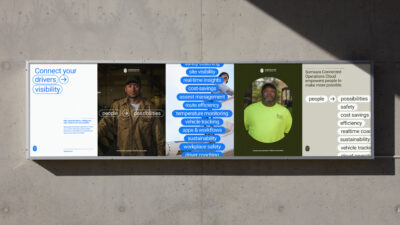Remember who’s on the other end: not a data point, target audience, or persona – a real human.
Today’s digital interactions often overshadow face-to-face connections leaving the essence of business transactions obscured. Yet, amidst the data-driven strategies and market segmentation, lies a fundamental truth: businesses ultimately engage with people. Instead of viewing customers or clients as mere data points on a graph, refresh your perspective and bring it back to the fundamentals. Scott Stratten, marketing guru, nails it when he says “behind every sale or deal, there’s a person with needs, emotions, and desires”. Welcome to the era of B2P – Business to People™ – where the focus shifts from merely catering to consumers or other businesses, to fostering genuine human connections.
Let’s explore this in action through the lens of some remarkable examples.

1. Circle’s Launch Spot – Put People First
Circle’s influencer platform spot recognizes the power of genuine human connections in marketing. The campaign speaks to the human desire for meaningful engagement and connection. In a digital landscape where interactions can feel superficial, people crave authentic connections and meaningful experiences. By fostering genuine relationships with influencers, Circle creates opportunities for authentic engagement with their audience, driving deeper connections and brand loyalty. This approach not only boosted brand credibility but also fostered meaningful engagement with their audience. circle.so
2. Patagonia’s “Fashion is None of Our Business” – Be Incomparable
Patagonia’s “Fashion is None of Our Business” campaign is a prime example of being incomparable by harnessing radical authenticity. At its core, this campaign challenges the traditional norms of consumerism, urging individuals to rethink their purchasing habits and prioritize environmental responsibility over excessive consumption. It’s usually quite controversial for a brand to ask you to buy less of their products but coming from a brand who’s ethos revolves around protecting the planet it only feels natural. Rather than hyping their products, they advocate for conscious consumption and environmental responsibility. Patagonia’s marketing strategy goes beyond selling products; it’s about inspiring change and rallying people around a shared cause through radical authenticity. “Fashion is None of Our Business on Youtube”

3. Samsara Rebrand – Keep it Simple
Samsara’s rebranding effort goes beyond surface-level changes; it embodies a profound commitment to human-centric innovation and accessibility, which resonates deeply with customers. By simplifying their messaging and design, they made their technology more accessible and approachable. This shift humanized their brand, making it easier for customers to connect with their solutions on a personal level. Link to Case Study
4. Service Now’s Rebrand – Focus on Experience
Service Now’s rebrand was built around the insight that “technology should be in service of people.” From that insight, they built the new brand platform “Works for You” and then “The World Works With ServiceNow.” Instead of overwhelming customers with technical jargon, they emphasized simplicity and user experience. By humanizing their brand, Service Now transformed complex solutions into intuitive tools that work for their customers’ needs and empower people to do more. “The World Works With Servicenow on Youtube”
Takeaways:
In the B2P era, success hinges on meaningful human connections. By embracing authenticity, simplicity, and empathy, businesses can forge deeper relationships with their audience and thrive in an increasingly people-centric marketplace. Here are some easy ways to ensure your work is human focused.
- Put People First: To prioritize genuine connections and empathy in your marketing efforts, you first need to understand your audience’s needs and values, and align your brand accordingly. Never lose sight of the human element by continuously listening to client/customer feedback and adapt your approach to meet their evolving needs.
- Be Incomparable: Your brand can’t be for everyone and having a strong POV of what you stand for or against is the key to differentiating in the market place. It gives you the platform to be real, be honest, and speak to the human truths that ultimately drive our behavior.
- Keep it Simple: Keep your messaging clear, concise, and relatable to your audience.Even the most technical, complex, ambiguous products need to be explained in a way that resonates.
- Focus on Experience: Shift the spotlight from features to the experience. How does your product or service improve the lives of the people who use it? How can you tell that story in a way that captivates your audience and feels true to their lives.
Conclusion: So, what can we learn from all this? In a world that’s becoming increasingly digital, the human touch matters more than ever. Whether it’s through personalized experiences, shared values, or just good old-fashioned empathy, the key to success in business is connecting with people on a human level. By embracing authenticity, fostering trust, and prioritizing genuine connections, businesses can transcend the limitations of traditional models and create meaningful impact, Business to People.





